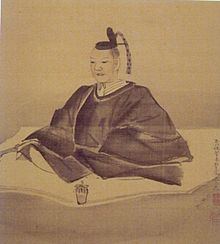Name Kobori Masakazu | Died 1647 | |
 | ||
Kobori Masakazu (小堀 政一, 1579 – March 12, 1647), better known as Kobori Enshū (小堀 遠州), was a notable Japanese artist and aristocrat in the reign of Tokugawa Ieyasu.
Biography
In 1604, Kobori received as inheritance a 12,000-koku fief in Ōmi Province at Komuro. He excelled in the arts of painting, poetry, flower arrangement, and garden design. His accomplishments include garden designs for the Sento Imperial Palace and Katsura Imperial Villa (Kyoto), Kōdai-ji, Sunpu Castle, the Nagoya Castle keep, Bitchū Matsuyama Castle, and the central enceintes of Fushimi Castle, Nijō-jō (Kyoto), and Osaka Castle.
Kobori though was known best as a master of the tea ceremony. His style soon on became known as "Enshū-ryū". In light of Kobori's ability, he was tasked with teaching the 3rd Tokugawa shogun, Tokugawa Iemitsu the ways of tea ceremony. In this role, he designed many tea houses including the Bōsen-seki in the subtemple of Kohō-an at the Daitoku-ji, and the Mittan-seki at the Ryūkō-in of the same temple.
